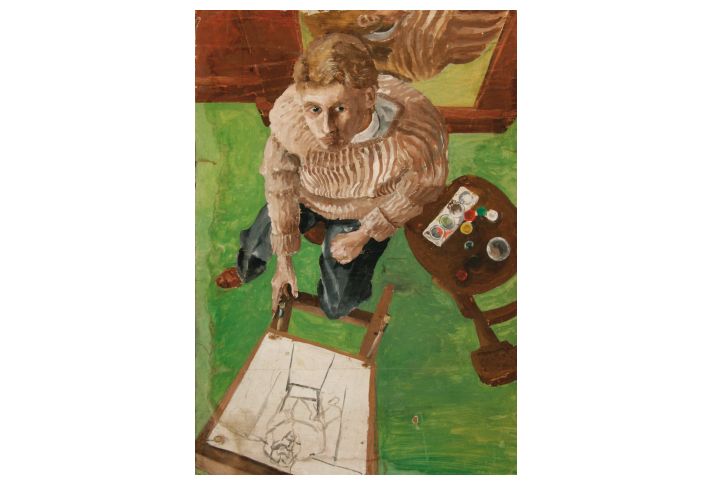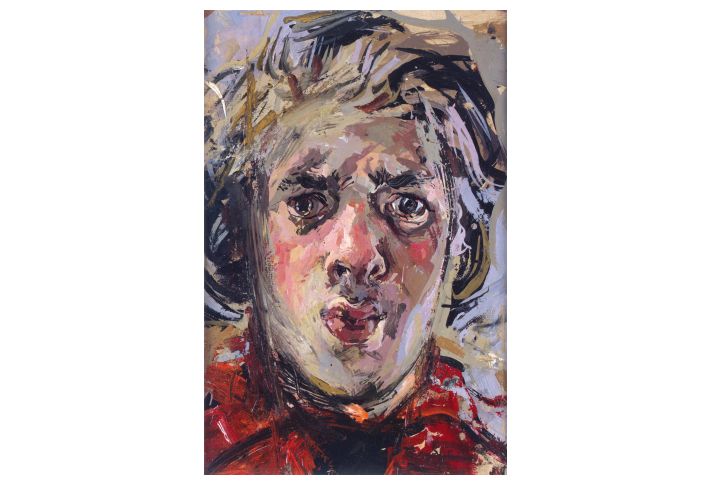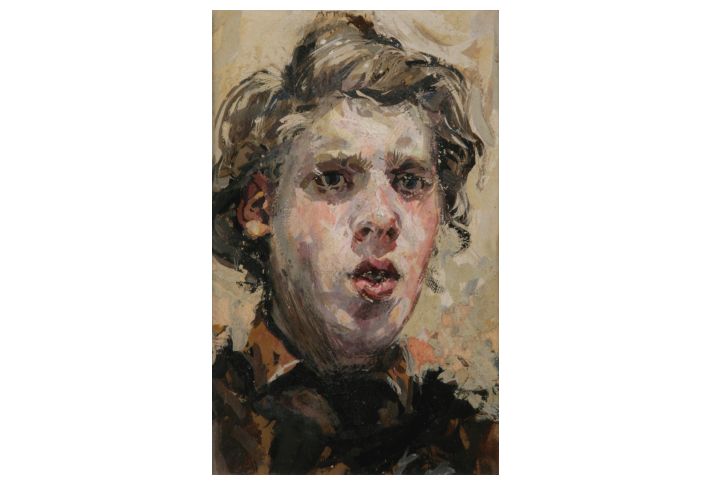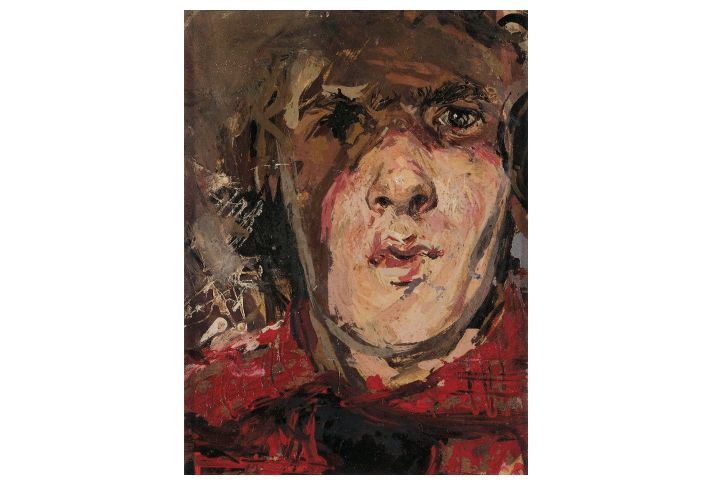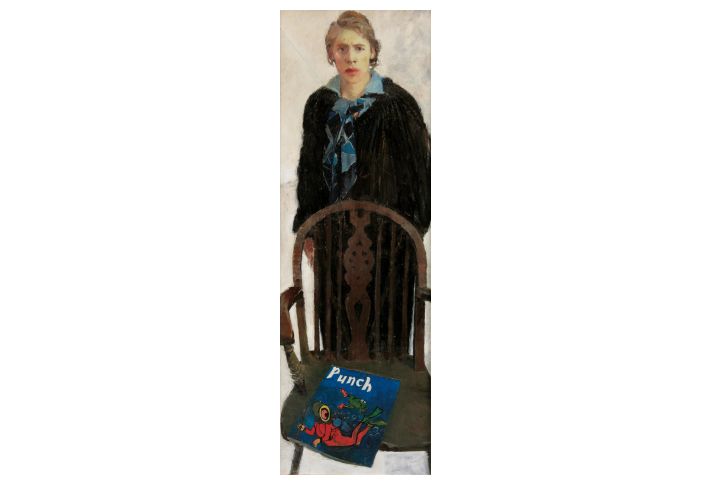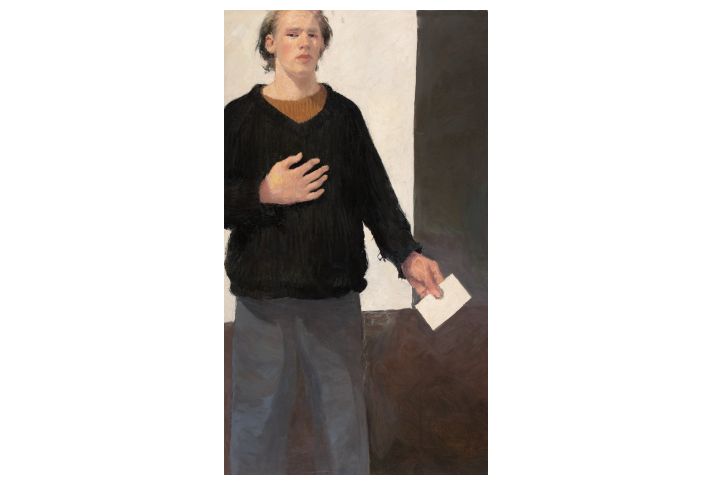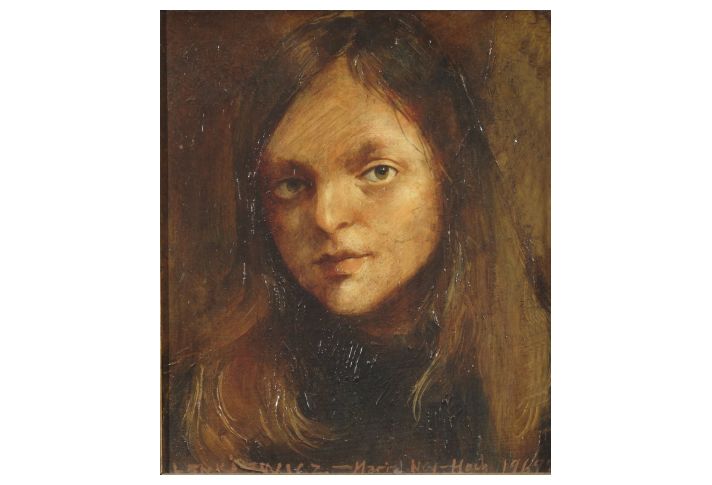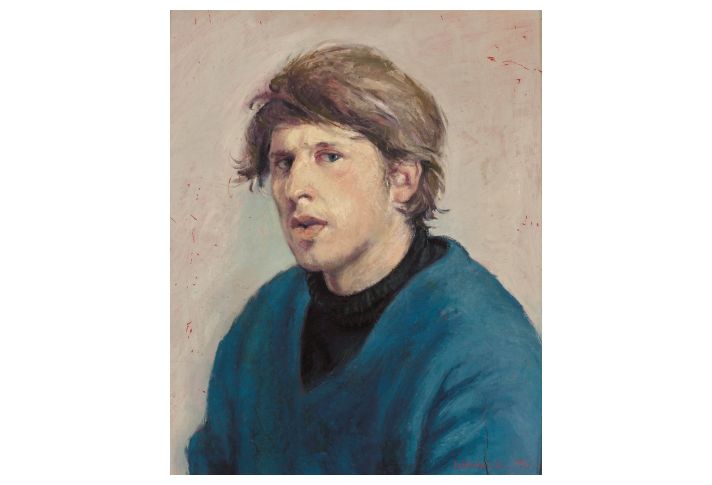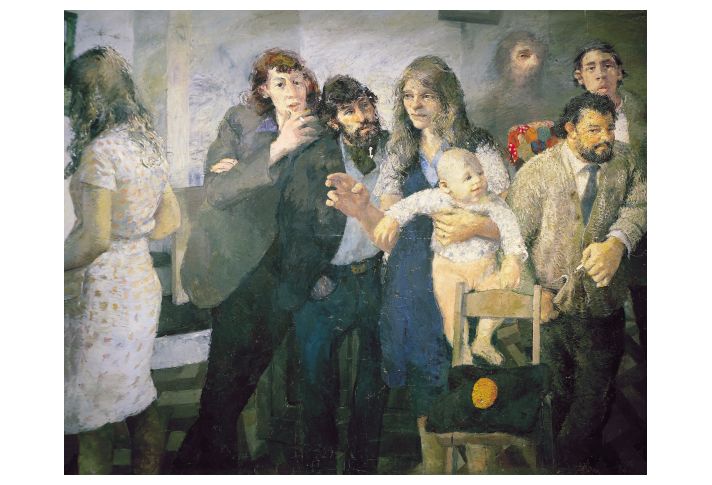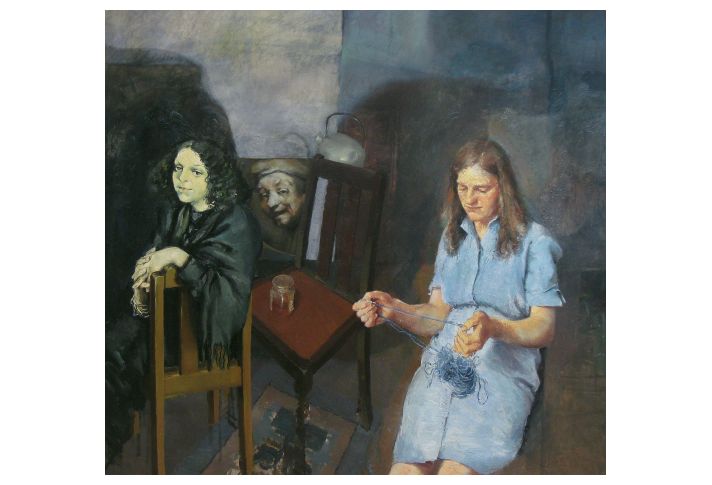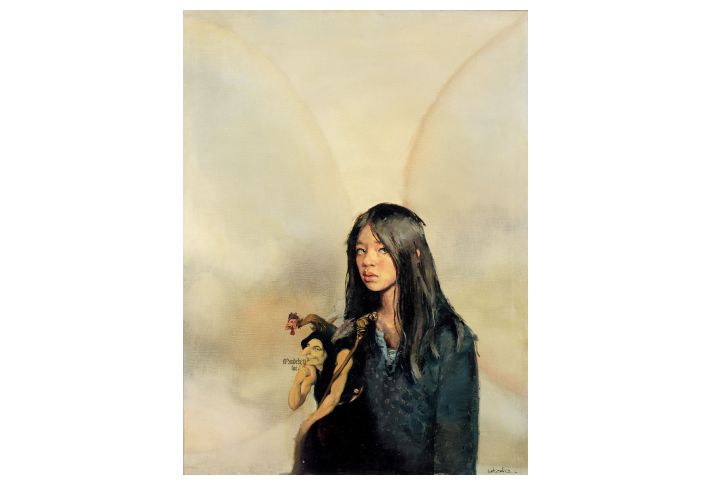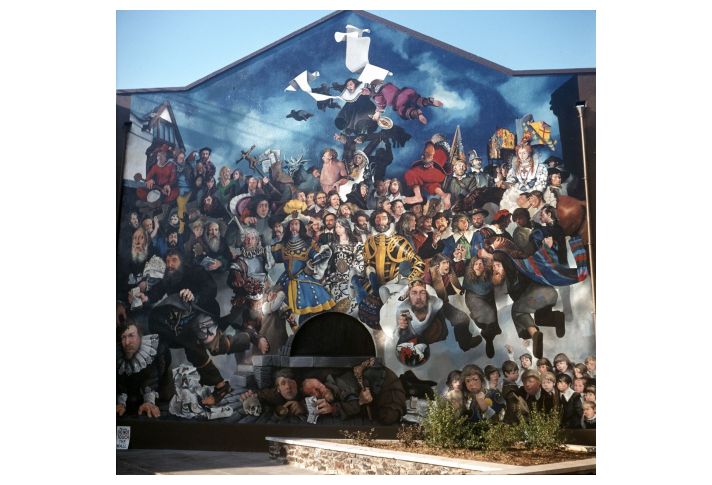The early years at the Hotel Shemtov, St Martin’s School of Art and the Royal Academy, 1941–1965
Robert Lenkiewicz was born on 31 December 1941 in Cricklewood in London, non-identical twin to Bernard. His brother John was born three years later. Lenkiewicz's parents ran the Hotel Shemtov in Fordwych Road. Alice (née von Schloss-Berg) and Isaac (born in Grajewo, Poland) married in Golders Green in 1940 having arrived as refugees from Germany the previous year.
The hotel was, according to Robert, "part old people’s home, part asylum." Up to twenty guests were resident at any one time, many of whom spent their last days there. The elderly guests would soon become the subject of Lenkiewicz’s first paintings and drawings.
I was introduced to all kinds of things – mental illness, human suffering and, above all, death – at a very early age and thought it salutary and thought provoking.
Inspired to paint by seeing Charles Laughton’s portrayal of Rembrandt in Alexander Korda’s biopic, Lenkiewicz was also deeply affected by the humanistic "schmilosophy" of the screenplay. He imbibed Hasidic stories from Shemtov residents with rabbinical training and discussed European philosophy with intellectual hotel guests. Mr Plotnik, a former school teacher in the United States, gave Lenkiewicz his first introduction to the work of Friedrich Nietzsche, whose work he would later discuss with another hotel resident, Axel Ney-Hoch, through whom he met the Hungarian poet and philosopher Alfred Reynolds. Robert would visit Reynolds at his home near Hampstead Heath and there met his friend Colin Wilson, recently lauded as the author of The Outsider.
Lenkiewicz was accepted at St Martin’s School of Art at the age of sixteen on the strength of a portfolio of anatomical drawings of dissected pigeons. He left home shortly afterwards. Whilst working in the canteen at St Martin's he approached co-worker Celia Mills and asked her to model for him. Celia recalls "He was thought extremely strange and a bit of a poseur – a copy of Nietzsche always visible in his coat pocket – but very interesting. What singled Robert out... was that he had an intense interest in everything." Despite his frequently serious demeanour in later photographs, Mouse recalls that "Robert was a giggler. Sometimes you used to laugh so much you thought you were going to die; that sort of laughing!"
Enrolling at the Royal Academy in 1962, Lenkiewicz had a series of studios in Steele's Road, Fellows Road and Eton Avenue. Already, he was working in a figurative style and often on a large scale. Lenkiewicz eked out a living as a jobbing artist, selling work when he could or designing restaurant menus and painting café signs. When not skipping lectures and tutorials to paint, Lenkiewicz could be found in the National Gallery, studying the work of the Old Masters. His visits were so numerous that he memorised the location of every painting in the collection, only for his knowledge to be rendered useless by a re-hang.
Lenkiewicz was always surrounded by people, deeply immersed in the rawness of life. Inspired by the example of Albert Schweitzer, whose hospital at Lambaréné the young Lenkiewicz had learned about from popular books at the Hotel Shem Tov, no one was turned away from his studios. As a consequence, Lenkiewicz became a notorious neighbour, attracting down and outs, alcoholics and addicts into his orbit. Under pressure to leave fashionable Hampstead, Robert and his first wife Celia ‘Mouse’ Mills moved to Cornwall in 1964, where Robert taught art at a primary school. A year later, the couple and their daughter Alice moved to Plymouth.
The idea of exploring the human condition through a structured series of exhibitions first occurred to Lenkiewicz in his Hampstead years, but was first put into practice after the artist’s relocation to Plymouth in 1966. Robert lived in a succession of homes in Plymouth, first with Mouse and then Monica Quirk and their son Reuben. The families shared their homes with vagrants, living hand to mouth, earning small sums from commissions or sketches hawked door to door.
In 1969 Lenkiewicz was given studio space by a benefactor at No. 25 The Parade in Plymouth’s old port, The Barbican, where he opened a shop called 'The Portrait Painter.' But the artist had not lost his penchant for the heroic scale and in 1971 he began work on the Barbican Mural on the wall of the adjacent warehouse. Some 3000 sq. feet (278m²) in extent, the mural deals with ‘The Influence of Jewish Thought on Elizabethan Culture, 1580 –1620’ and was completed in the summer of 1972.









